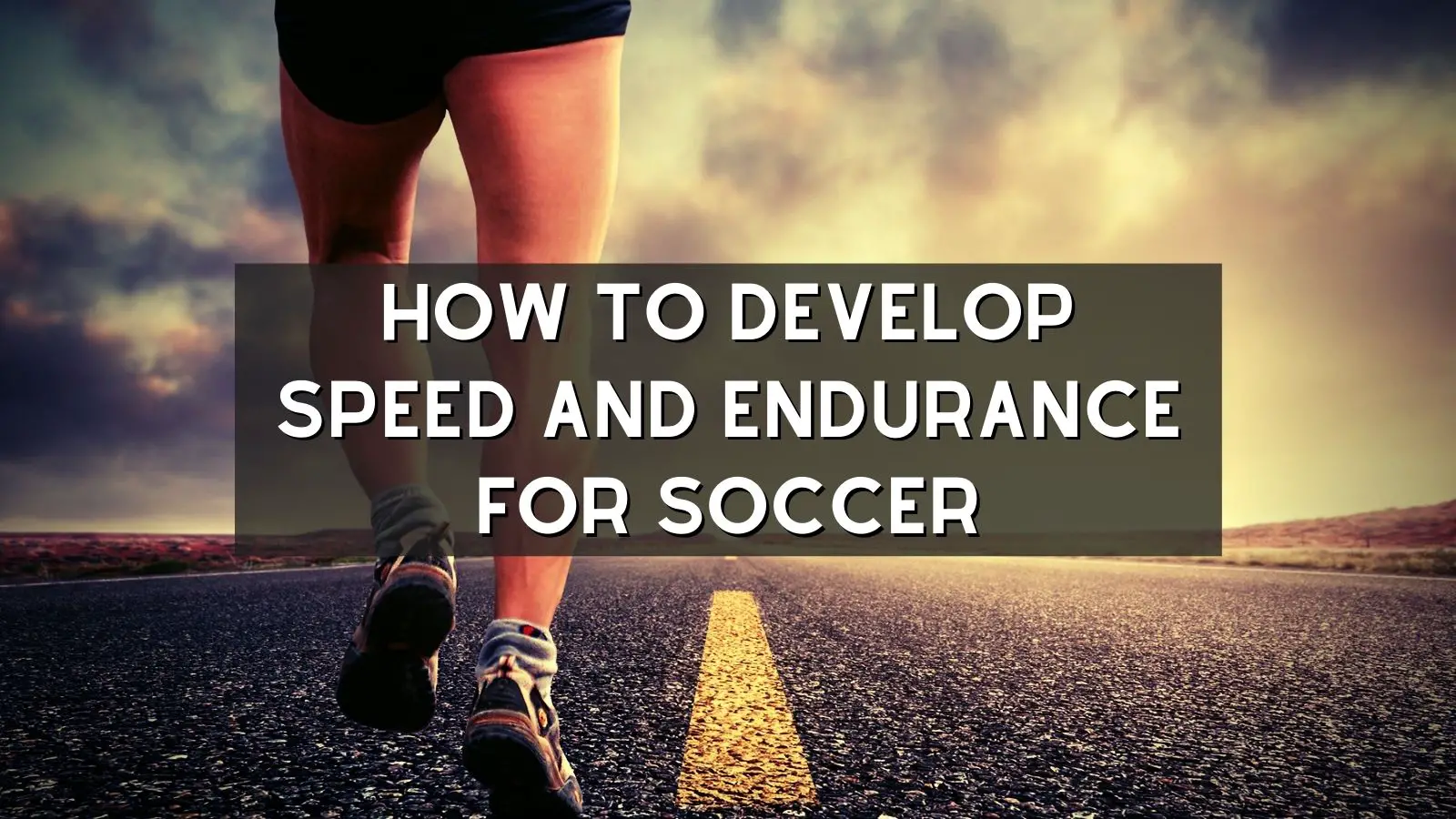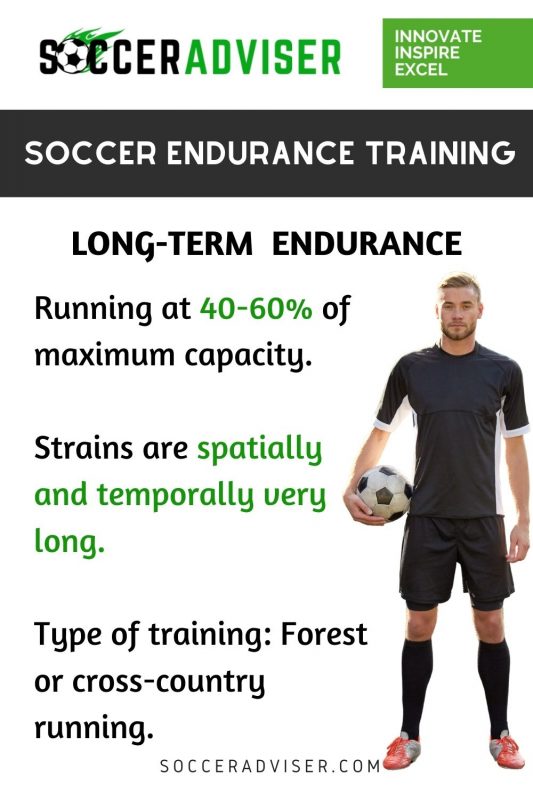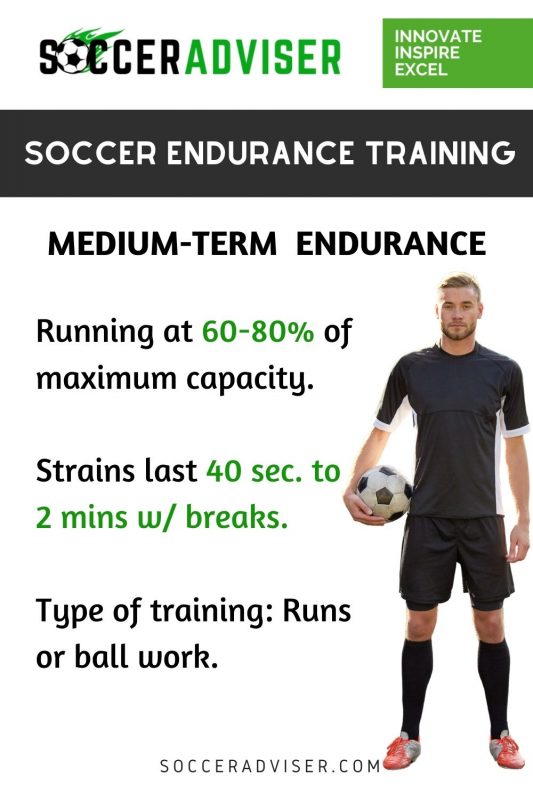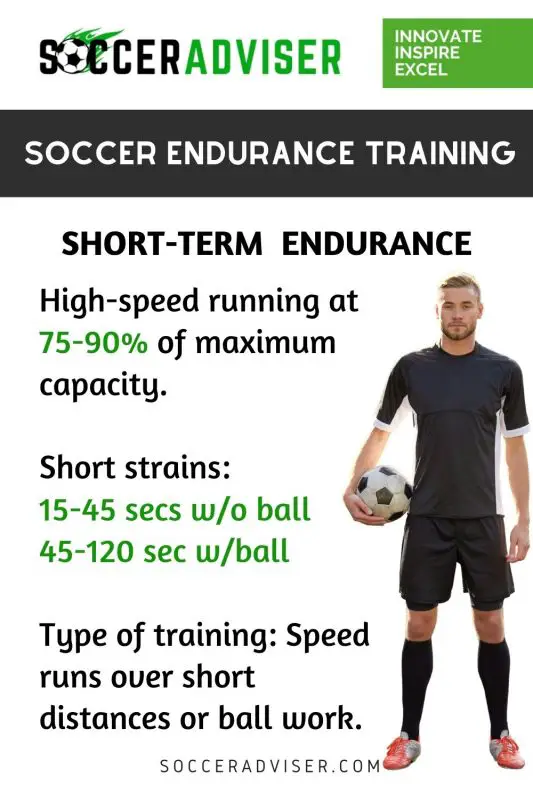How To Develop Speed And Endurance For Soccer

As an affiliate, we may earn from qualifying purchases. We get commissions for purchases made through links on this website. You can read more on our Affiliate Disclaimer here.
Running is a key part of soccer. Whether you’re chasing down an opposing player, or trying to keep your feet as you’re being run through, you’re going to have to develop some speed and endurance to be a successful soccer player.
That means it’s important to work on endurance and speed training. And, you need to do it right, so that you can perform well on the field. The different types of running methods we will talk about in this post, is just one option. There are other exercises that you can do with the ball to help build endurance and speed for your soccer training.
In this post we are going to explain how you can develop speed and endurance for soccer and what your body actually goes through while it develops.
Speed Training For Soccer
When playing soccer, your speed ability is required continuously, no matter what position you play. There will be specific occurrences within a match that demand your reaction, which needs to be thought up and put into action very fast. In some cases, this will be with the ball or in pursuit of the ball.
To successfully meet this demand for increased speed, you will need to up your speed performance mentally and physically.
In this case, the physical aspect of your speed is the most important, and it relies mainly on raw strength. Your efforts for improving your speed with dynamic strength training will be of great benefit here.
Coordination Exercises Increase Speed
A range of coordination exercises can also increase speed and aid the nervous system, helping it to function faster.
Coordination exercises improve the interaction between the muscles, reaction time, and an accelerating effect on how fast the muscles contract.
Frequent intervals are required with speed training to allow your nervous system time to recover completely so that it doesn’t adjust too quickly to the impulses; it needs to remain sensitive for the movement to be effective.
With this sort of training, you also have the option to place emphasis on either endurance or resilience. However, you should never approach speed training with exercises or a workout plan which exhaust you as stimuli will be less effective if this is the case.
For the optimum strength of stimuli, you will want to perform 20 to 50-meter sprints, both with and without the ball. This is one way to ensure that there is an appropriate stimulus density.
In soccer, speed training is particularly essential as in many scenarios, greater speed, the agile sprint to the ball, the abrupt shift of direction, or the unplanned dash beyond the opposition with the ball can determine the outcome of the entire game.
The faster you react, the faster you can begin, the sooner you get possession of the ball, you have a huge advantage as this scenario plays out.
Endurance Training
Whether you play amateur, semi-professional, or professional soccer, there is no denying that endurance is of great importance. Particularly when you are doing pre-season training, incorporating some basic endurance training will significantly benefit the overall package you bring to the field.
Consistently moving throughout the game, aggressive reaction with and without the ball will naturally result in a player’s fatigue.
However, if you have actively planned and prepared for this with endurance training, you will not have much to worry about, as you can easily combat this effect.
Regularly carrying out endurance training in and out of season will prepare you and support the healing and recovery process.
Some useful methods of endurance training are forest or cross-country running or simply appropriate ball exercises. Ball exercises tend to be more enjoyable and easier to complete for most players, for obvious reasons!
Another thing to consider is that endurance training for soccer helps reduce your proneness to injuries.
Players who have been training to focus on endurance are less prone to injuries and can achieve full capacity much faster.
They are also more stress-resistant with a greater level of psychical durability.
But what does this mean for him or her while training or during a match? All it means is that he or she will be better equipped to handle frustration, failures, and lack of motivation issues.
A soccer player should not just be training endurance for the sake of training endurance, however. It should always be with a view to improving in a way that integrates into his tactical plan.
This includes general aerobic endurance as well as special anaerobic endurance as this helps to increase physical capacity, also.
Training Methods for Endurance
Here are some tips you can pin to your board or share to remember the different endurance training methods!





